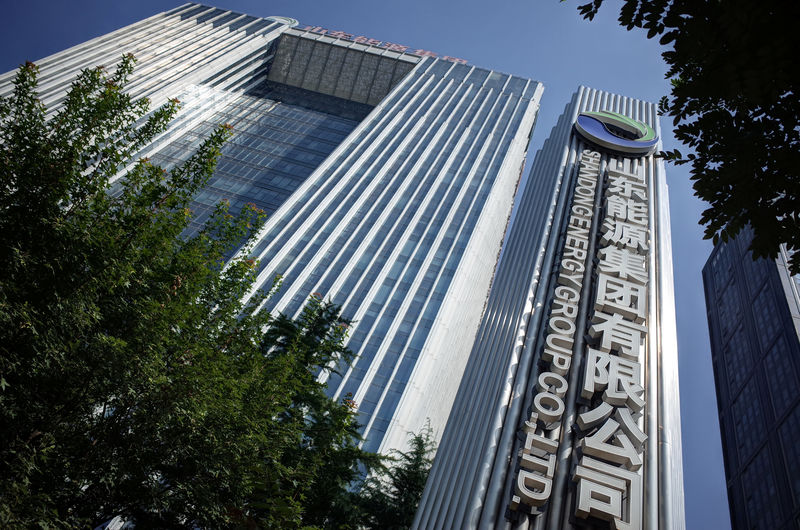By Shu Zhang and Matthew Miller
BEIJING (Reuters) - A $1.44 billion restructuring deal at an insolvent coal mining company in eastern Shandong province offers a glimpse into how China is preparing to tackle a corporate debt burden that has ballooned to $17.9 trillion.
Loss-making Feicheng Mining Group struck the deal last December with 10 banks, led by Agricultural Bank of China Ltd (AgBank) (SS:601288) (HK:1288), which agreed to extend the group's loans at concessionary interest rates.
Bankers say the settlement, which required 10 months and 41 rounds of negotiations to complete, only advanced after the formation of a creditors' committee, a mechanism the China Banking Regulatory Commission (CBRC) officially endorsed last year to manage "troubled firms with a large volume of debt".
At the opening of parliament on Sunday, Premier Li Keqiang identified "bringing down the leverage of enterprises" - which the Bank for International Settlements says reached 168 percent of GDP last year - as a key task in 2017.
With bankruptcy, particularly at state-owned companies, practically taboo in China, and lenders forbidden by the CBRC from halting or recalling loans without notice, creditors' committees are at the vanguard of this monumental exercise.
By the end of last year, 12,836 committees had been set up nationwide, examining borrowing of 14.85 trillion yuan ($2.15 trillion), equivalent to 17 percent of total commercial bank loans, according to statistics from the CBRC last week.
In central Henan province, CBRC helped form creditors' committees at more than 1,300 companies holding 55 percent of corporate loans in the region by last September, Henan CBRC said.
China's leaders want the restructuring to address financial risks while avoiding big employee lay-offs.
"The solution for zombie firms isn't just bankruptcy," a Shandong-based banking official told Reuters. "The impact of bankruptcy is just too big. Just think about the thousands of workers. Social stability is key."
Stability is always uppermost in the minds of Chinese leaders, and even more so this year, ahead of the five-yearly party congress this autumn, when a new generation of senior leaders will be selected.
"China is avoiding the crisis of calling in loans that can't be repaid anyway," said Paul Gillis, professor of accounting at Peking University's Guanghua School of Management. "This buys time to do things in an orderly way."
EXTENDING LOANS, CUTTING RATES
It was the Shandong provincial government that stepped in and demanded the restructuring of Feicheng Mining, the company said in a filing.
Its parent company Shandong Energy Group, the province's biggest state-owned firm, originally proposed to get Feicheng's 10 lenders to take a 60 percent loss on their 9.95 billion yuan ($1.44 billion) in loans, said Wang Yanlei, vice governor of the Shandong branch of AgBank.
Feicheng had been modestly successful before embarking on a debt-fuelled expansion in 2009, but the plunge in coal prices in 2012 proved devastating, landing the company with five straight years of losses.
After the provincial government intervened, a creditors' committee was established to hammer out a debt restructuring agreement.
That deal created a new operating company, which took control of the firm's good assets and half of its loans.
Another 30 percent of the loans remained at the old firm, and 20 percent were taken on by Shandong Energy, which separately entered into a debt-for-equity swap with China Construction Bank Corp (SS:601939) (HK:0939) to settle 21 billion yuan of its own borrowing.
Feicheng's loans were extended by eight years at a concessionary interest rate of 3 percent, lower than the central bank's benchmark lending rate.
Guo Shuqing, the CBRC's chairman and former governor of Shandong, endorsed the deal last Thursday, saying it represented a "relatively satisfying" outcome, with all parties sharing in sacrifices and gains.
Extending loans at reduced interest is a common tactic for China's debt restructuring, keeping troubled firms alive while avoiding impairment charges for the banks on their doubtful debts. That helped China's commercial banking sector report the first decline in its non-performing loan ratio in five years last quarter.
"Banks are making a trade-off between top line and credit loss," said Wei Hou, Sanford C. Bernstein senior equity analyst for China banks. By rolling over loans and cutting interest rates, banks are spreading credit costs over many years, he added.
Premier Li also identified debt-for-equity swaps among key items in the toolkit for bringing down corporate debt, and the figures demonstrate their extensive use.
Since October, China's banks have undertaken nearly 500 billion yuan in such swaps at more than two dozen firms, mostly state-owned coal and steel enterprises, according to analysts.
That could double to more than 1 trillion yuan by next year, preventing as much as 3.5 trillion yuan in total loans from turning bad in the near future, according to estimates by Hou.
"A lot of these loans needed to be looked at as equity in the first place," said professor Gillis.
"There was never any realistic possibility that the companies would be able to pay them back," he added.
($1 = 6.8975 Chinese yuan renminbi)
